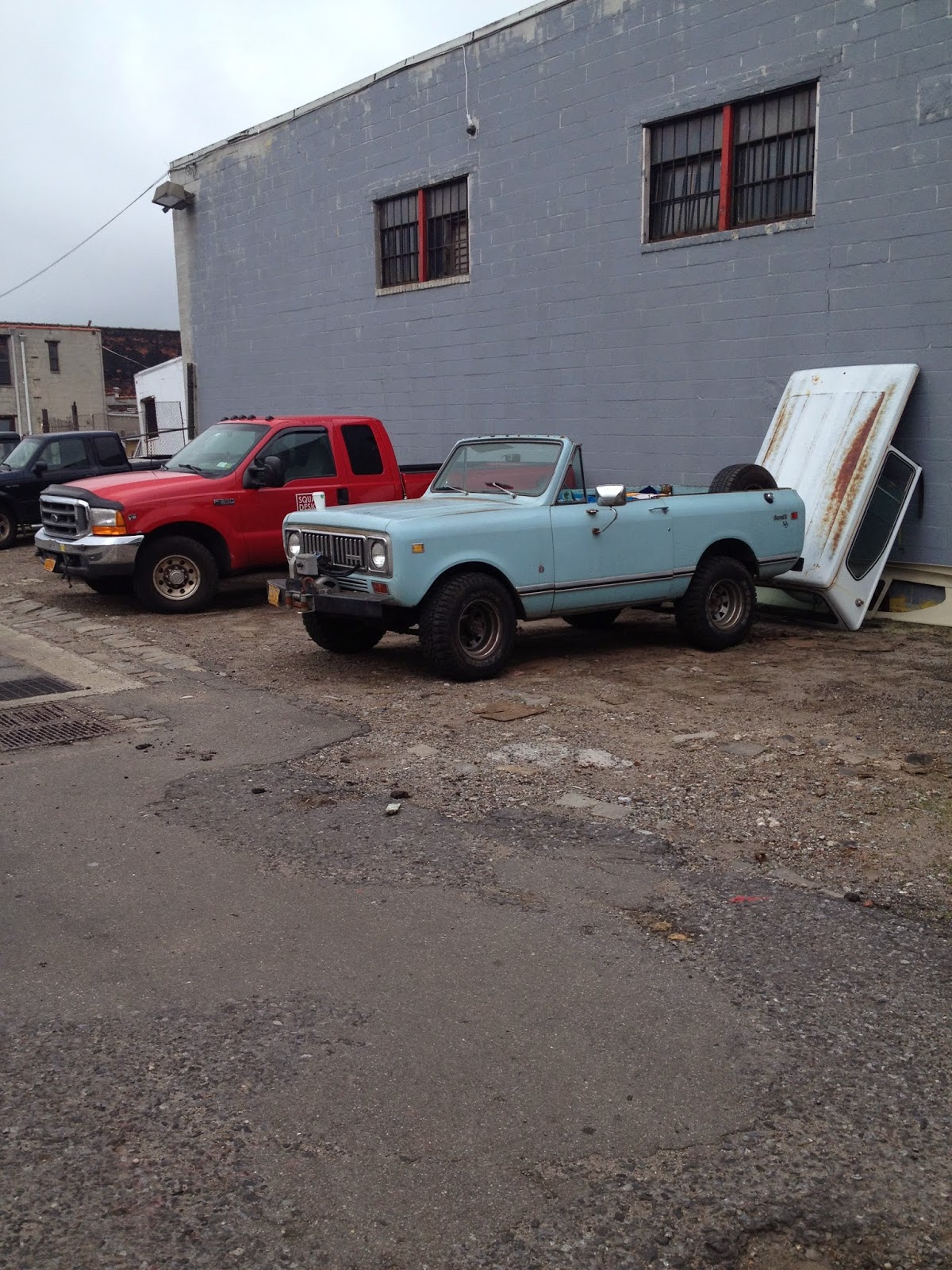BINDERS!
Today I will feature a model of truck that is close to my heart as I had one for years; the International Harvester Scout II.
This inviting little bit of summer propaganda was beckoning from behind a chain-link recently:
I had to walk in to the private lot to get a better look as it is a 1975 model in Glacier Blue. These Scouts are absolutely the most capable vehicle I've ever driven in the snow or off-road. I would say the only thing that comes close or might do better is a Jeep.
The fact that the entire roof comes off at the windshield makes for a super fun beach cruiser. That enormous white thing leaning against the wall behind this Scout is it's original factory roof which is all steel and damn heavy! Removing mine way back when was a crushing job with just one other person. The reward was having a convertible where you just have to deal with the elements!
Look at the winch on this thing! I wouldn't think twice about heading into the deep woods of Maine or crossing a rocky desert in one of these, so I'm sure that winch got some use. This truck is remarkably rust-free as you might expect with those Oregon plates hanging off of it. Most of the Scout bodies dissolve like sugar cubes dropped in boiling water even as their engines continued running fine.
About those engines; most were either a 304 or 345 V8, and they were some of the heaviest engines by weight ever entered into a civilian production vehicle. When the International Harvester company decided to make a Jeep-like 4x4 they thought about capability and durability as opposed to saving weight. This is a company that grew out of producing farm equipment and large vehicles such as buses and tractor trailers (which is why they're known as "Binders"). The engine blocks were both enormously heavy with thick cylinder walls and built to never rev very high. As a result they will usually perform well into the several-hundred-thousand mile range, long after the bodies that house them fall away like burnt paper. Mine was a 304 mated to a 4-speed stick shift and it was great (except for the time a rear wheel and half the axle came off while driving down the highway!).
On to our next Scout, located under the BQE naturally:
This is a 1976 model in Omaha Orange. When identifying the year of a Scout you really have to go by the grill which is one of the only things that changed. The blue one above was lifted a bit with bigger aftermarket wheels, but this frumpy little orange donkey is sitting at the original factory ride height. It's so rare to see a Scout with the original bumper as they're usually replaced with almost anything tougher!
You can't see him, but there was a guy in a sleeping bag just waking up on the other side of this thing so I couldn't really linger. Of all the surfaces in NYC to just lay your bag on and sleep the space under the BQE might be one of the worst! I suppose he's an appropriately rugged stablemate to an IH Scout II.
Notice the fact that the entire bottom of the door and tailgate are going away into the afterlife.
This thing doesn't really care what you think of it. As long as you're thoughtful enough to show up with a battery, some gas, and some oil it will do whatever you want it to (except go fast).
Nothing on these operates automatically or electronically. When you want to switch to 4-wheel-drive you get out and manually lock the front hub by turning a dial in the center of the front wheels from 12 o'clock to 6 o'clock. The front hubcaps have a hole in the center to allow for this task. Once in 4x4 though you are absolutely unstoppable! There were high and low setting for mine and the only time I put it into low was to make sure it worked. Top speed in low is literally around 20/25mph.
Well there we have it; two Scout twos for Twofer Tuesday!








There are party buses that leave from Omaha and Lincoln to bring people in. We drove out there with a small cooler and quickly realized we didn't do it right. Why didn't we bring our fire pit? fence contractor texas
ReplyDelete